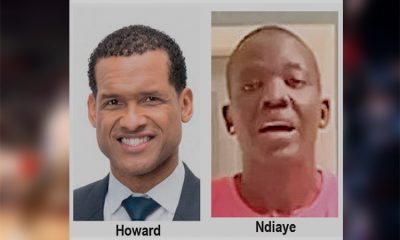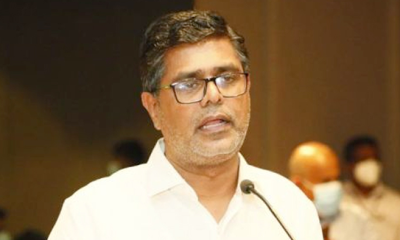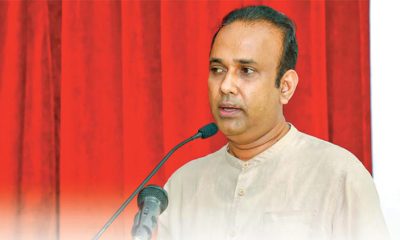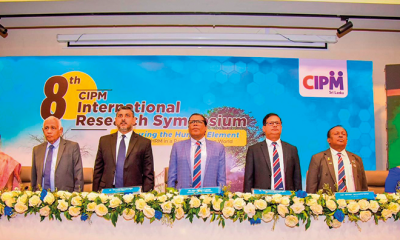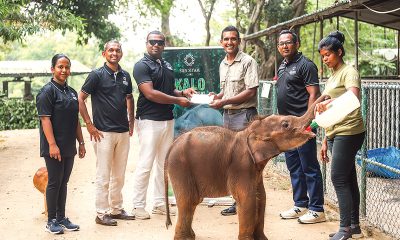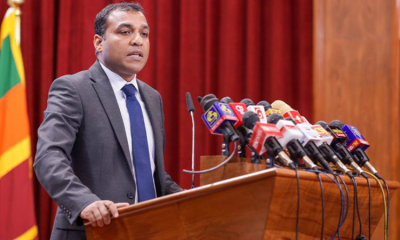Features
More on jungle treks: Lahugala and bold leopards
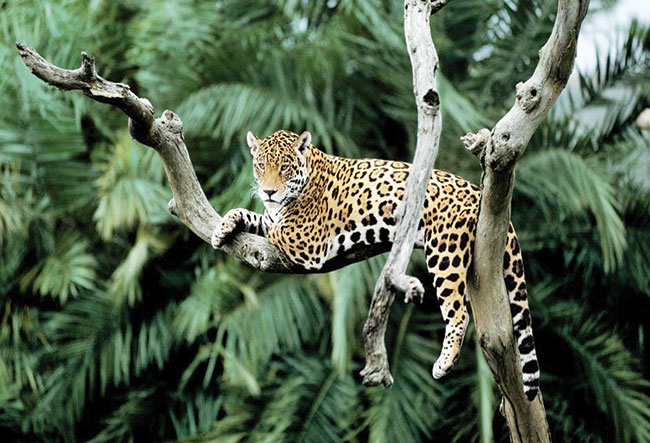
BY H A I Katugaha
(Continued from last week)
One morning in the 1950’s we had gone across into Yala Block 2 and our destination was Walaskema in search of the famous crossed tusker, so named because of the crossing of the tusks in front. We had Block 2 all to ourselves. Parking the jeep, we began our walk to Walaskema. There were four of us in the party, namely Uncle Sam, Upali, our tracker and myself.
We saw a leopard sitting under a tree. He got up and started walking towards us. This was most unusual. We shouted at him but he took no notice at all. He growled at us and kept getting closer. Shouting at him we walked backwards and even threw stones at him. One thrown by the tracker hit him on his head, but he kept on coming.
Having reached the jeep, Upali raced the engine and sped towards him. The leopard then ran off into the jungle. Leopards usually run off at the sight of man, and the difficulty is to get close to one. Uncle Sam was of the opinion that this one may well have been used to humans since the Kataragama pilgrims passed this way every year. Maybe he even had a taste of human flesh by eating the corpse of a pilgrim that had died during the walk across Kumbukkan Oya to Menik Ganga. It was a large male animal in the prime of his life.
We reached Walaskema, which was a water-hole, and though we waited till evening the famous tusker did not come to drink water. On our way back we did see a herd of elephants across the Pilinnawa plains.
Years later while camping out at Kosgasmankada in Yala Block 1, one night I noticed some movement under one of the lanterns that we had hung around the camp to keep animals away. Using my torch I discovered that it was a leopard that sat right under the lantern and watched our camp. Soon several torches were focused on it and we had a good look at this fine male leopard. One member of our party then turned the vehicle and put on the headlights. There he was in all his glory watching us with apparent delight.
Next morning we reported this unusual behavior to the park office and were told that this was a bold leopard that had even attacked a labourer attached to the department while walking along at the campsite. The rule is that a leopard will run off at the sight of man unless man has wounded him. It is always best to remember that there are exceptions to every rule.
Land of the gentle giants
At dawn, in the early 1960’s, I lay stretched out on a mat in the verandah of the old Irrigation Department bungalow at Lahugala. A regular swish-swish close by informed me that an elephant, perhaps two, were feeding on the luscious beru grass close to the sluice. It was still very dark. The first vocalists for the morning were a pair of magpies. Their whistling calls were welcome indeed. Next a shama gave vent to his repertoire of vocal renderings. Then the pair of brown fish owls that was always to be found near the sluice finished their serenade with a short burst of hoo hoo.
As darkness gave way to light that misty morning, I watched the dark shape of an elephant slowly moving up to the rock in front of the bungalow. He stood still, probably enjoying the cool breeze that was blowing across the tank. After about 15 minutes he came down and walked towards the well.
Sammy, the Department’s watcher at the bungalow, kindly brought me a hot cup of tea and whispered, “Sir, be careful when you go for a wash, there is an elephant by the well.” I thanked him for his concern.
By the time my friends and I finished our tea, the elephant left the well and moved off into the jungle to our right. We could now see that there were two elephants feeding by the sluice. About 7 am they slowly walked up the bend of the tank and faded away to the left of us.
Across the tank, felled logs of the majestic trees that they once were, stood out in the early morning sun. It happened to be the depot of the State Timber Corporation and quite an eyesore in such a wonderful setting. Birds that were resting by the tank, such as painted storks, pelicans, teal, open-billed storks and a few white-necked storks, took off to look for breakfast. Four adjutant storks began their stately walk in search of food.
It was a typical morning at Lahugala. As we walked up to the rock a solitary pied kingfisher hovered momentarily, dived and came up with a fish. He flew to his perch, flicked the fish up and expertly swallowed it head first. The purple herons and the coots were active in the grass, while the beautiful jacanas were flitting over the lotus leaves looking for food.
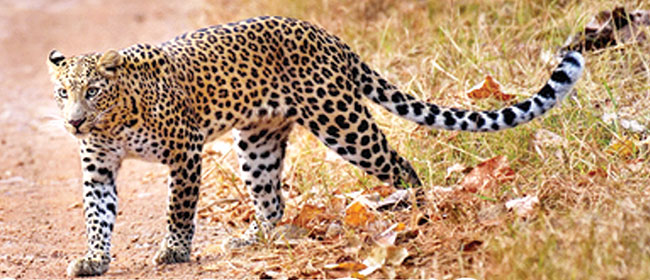
Lahugala was then only a forest reserve and not a national park. The tank was managed by the Irrigation Department and Sammy was its watcher that looked after the sluice. Later Lahugala became an elephant reserve. Elephants were the chief attraction and they were to be seen throughout the year, but during the dry season from July to September, they congregated in large numbers. During this period, the herds gathered here for water and for the beru grass that they loved so much. There was always a resident population of elephants numbering about twenty. It was not till the 1970’s that it finally became a national park. Though it was only five square miles in extent it was a haven for elephants.
That morning we got on our scooters and went to the village for breakfast. Coming back for a bath in the tank was always refreshing. Our lunch over we did have a short snooze, leaving Sammy on the lookout for elephants, It was not till 2 pm that the elephants began to come to the tank. The first to arrive were solitary bulls, six of whom arrived from different spots and waded into the tank. That evening the herds came late, and by 5.30 pm there were over 50 elephants out in the tank. Depending on where the herds were, we walked up to the nearest tree and observed them, feeling quite safe. (Walking in the park was allowed in those days.)
One afternoon, Mr.Peter Jayawardena, who was the Wildlife Department’s ranger stationed at Lahugala, took us for a walk along the bund. Hearing a noise he led us into the jungle. There in a clearing were three elephants lying flat and sleeping. The noise that we heard was their snoring. They were soon joined by another that came up to them, laid himself down and then slept. After a while Mr. Jayawardena clapped. The four elephants were up instantly and crashed away into the jungle. It was amazing to see such large animals get up and run so quickly. The jungle was soon silent.
At the time Lahugala was an elephant reserve, and the Wildlife and Nature Protection Society took the Irrigation Department’s old Bungalow on lease. It was renovated and made comfortable. The late Mr. Noel de Costa was responsible for getting the place into a satisfactory condition. Thereafter we were able to book the bungalow and stay in it in comfort. We had only to take our food and bedding with us.
During those days it was a common sight to see people walk into the jungle with guns and many dogs at their heel. Gunshots were heard every night. Venison was freely available at the bazaar. Poaching was rampant.
It has been my good fortune to see two leopards at Lahugala. One was on the road leading to the bungalow late one evening when we were returning from Kithulana. The other walked past the bungalow one night just as we were about to retire for the night, A bear came along the road one night and hooted, and we watched him by moonlight. Had he not made a sound we would never have seen him. Deer and wild boar were not seen in those early days, and no doubt poaching was responsible for this scarcity. Every night we heard gunshots..
Lahugala has always been a bird watcher’s paradise. The tank is a fine rendezvous for storks, herons, waders, and other water birds. The surrounding jungle abounds with birds. A pair of grey-headed fishing eagles had a nest on a tall tree close to the sluice. They carefully tended their nest every year. A pair of brown fish owls nested close by. Many raptorials were seen over the tank at all times. I have seen one black-necked stork in the 1970’s and several adjutant storks. The thrill was to spot the beautiful red-faced malkoha or the racquet-tailed drongo. On a short walk along the track leading to Heda Oya, one would invariably see the red-faced malkoha. In fact we named it Malkoha Lane. It was not uncommon to see them in groups of four to six.
It was during the time I was at Badulla that I was able to really explore Lahugala and its surroundings. One afternoon there were two bull elephants feeding by the sluice. Getting close to them, keeping behind the bund, I took photographs, but one of them suddenly charged. He could not have seen me and the wind was in my favour. I ducked down on the blind side of the bund and lay flat among some large granite blocks that were thankfully there. The bull elephant came up the bund and to my relief ran along it. Had I run in panic on that day I would not be writing this article.
I picked up my field glasses and went back to see what his problem was, this time from a very safe distance. He had suppurating gunshot wounds on both his hind legs, and his left ear was torn. Many other swellings on his body and head only proved how many times he had been shot at. Naturally he hated man. I informed the Wildlife and Nature Protection Society of this troublesome bull elephant, so that they could inform other occupants who came to this place to be careful of this animal.
Several months later I was at Lahugala with my family. Late one evening we met the elephant on the main road. A herd was feeding below the culvert and he was coming along to join the group. I was able to take a picture of him as he was crossing the culvert. While we were watching the herd I noticed that he was quickly moving parallel to us. and was trying to come in front of us. We moved ahead and waited for him. Sure enough he came to the road and immediately charged us. This time we were in a jeep and had no difficulty in avoiding his aggressive behaviour. He charged us three times on that day.
This bull elephant became quite a menace. He would wait quietly by the road and suddenly charge at any passing vehicle. Buses were his favourite targets. Three months later I was informed that he was shot. I drove down to verify if it was the same animal. It was truly the same troublesome bull, which was shot and had fallen in a chena close to Kithulana Tank. Birds were picking up dead maggots from his wounds. He had 23 wounds on the left side of his body and eight on his head. Finally he was at rest.
Lahugala was next declared a national park. The area began to be patrolled and it was at last getting the protection that it so richly deserved. It was in the late 1970’s that I saw the first herd of deer come out to feed. Wild boar soon made their presence felt.
One morning while I was seated on the rock, I met Appuhamy who came with a katty (a cutting blade with a long handle) on his ample shoulder. Having heard that I had come all the way to watch elephants, he took me to his chena, which was close to the Sengamuwa tank. To my horror I saw that his entire chena was devastated, having been trampled by a large number of elephants that had passed through. All his labour was lost in one night.
“You will see them at Lahugala today.” he said sadly. I gave him most of the cash I had with me and asked him about compensation. “Sir, I will get my money but I will have to give bribes in return; otherwise it will take months, perhaps even a year.” It is one thing for us to talk of conservation of the elephant from our homes and offices; while it is quite another matter for the poor cultivator. I told him it was a known fact that elephants come to Lahugala during that time of the year.
“True Sir, I would have harvested my crop by now, but the rains were delayed and so I planted late.” As I sat on the rock that evening and watched elephants pouring out of the jungle to my right, Appuhamy’s saying that I would see elephants at Lahugala that day kept ringing in my ears. As many as 186 elephants with four tuskers came to the tank. A herd of over a hundred elephants would have walked across his cultivation.
The conditions at the park improved rapidly, thanks to a dedicated staff that was stationed there. Being a small park it was easy to patrol. Poaching decreased. We began to see small herds of deer grazing close to the tank. I even saw a few sambhur.
There are many places of historical interest that one could visit while staying at Lahugala. One such place is Habutagala, where many ancient ruins, which include a forty-foot reclining statue of Lord Buddha in a cave, are found. Treasure hunters have dug into the statue. There is a small dagoba and several pillars to be seen. The most interesting features are Lord Buddha’s footprint carved in stone and an ancient stone inscription. These ruins belong to the Ruhunu period. Northern terrorists have attacked the village of Hulanuge twice.
Magul Maha Viharaya too is worthy of a visit. Situated close to Lahugala bazaar, it has several stone pillars and foundations. During the 1970’s, a unique moonstone was unearthed at this spot. It was in a fine state of preservation. Four of the elephants in the row of these animals carved on stone were dressed and had a rider on each. No other moonstone yet discovered anywhere in the country had this feature. Here again we find a small dagoba, a shrine room and a foundation of some structure with beautifully carved lions round its base.
More on jungle treks:…
Ancient stone inscriptions can also be seen. When conservation is completed some more interesting finds are likely to be found at this place.
Nilagiri Maha Seya is still covered in jungle. One has to cross Heda Oya and travel south along a jungle path to get there. We were warned to be extra careful and to make a loud noise when walking along, as there was a reputation for the presence of bears, in addition to the ever-present elephants. The walk was rewarding. The jungle was cool and had plenty of bird life to keep us occupied. My late brother, Upali, and Dr. Mahi Kottegoda accompanied me on all archaeological and nature-watching trips to the area. Kotte, as we called him, was an ardent bird watcher.
Nilagiri Maha Seya was in complete ruin. It was huge, with massive trees growing even at the summit. We were told that it was much bigger than the famous Tissamaharama dagoba. A large cylindrical stone kotha (crown of a Buddhist dagoba) was seen fallen at the very top of the dagoba, which resembled a hill covered in jungle.
A beautifully carved Bodhisatva statue is found at Mudu Maha Viharaya at Panama. This carving is in crystalline limestone and is really well done.
Lahugala became more and more popular. The Society bungalow was almost always occupied. Deer and wild boar were seen every day. Elephants were the main draw. One could see them every day of the year. A resident population of about 12 to 20 elephants never failed to appear. During the drought the numbers increased to about a hundred to 200 elephants. If we did not see them at Lahugala, we found them at Kithulana or Sengamuwa tanks.
Arugam Bay is only 12 miles away. It was a common practice to go there for the morning sea bath and bring back seafood for lunch. Then, followed by a well-earned siesta, we would wait for the elephants in the evening.
At ten past five, trumpeting announced the arrival of the herds as 32 elephants of different sizes ran to the water. They spread out in a line, had their drink and ran back to the jungle. They did not feed. It was obvious to us that they had arrived after a long walk. While we were wondering what had disturbed them, a large female, obviously the matriarch, led the 32 back to water. They were followed by over 80 more, who came out nearly in single file and waded into the tank. We counted them as they came out. We were seated on the rock in front of the bungalow.
Our friend Sammy whispered in my ear that more were coming. Sure enough another group came out to our left and walked over the bund to get into the tank. There were over 40 in this group. The two groups mingled freely and we saw a line of elephants across the Lahugala tank, a fabulous sight indeed. The bull elephants kept moving from one group to another testing the females for receptivity. One young female squealed and ran away from a bull. A larger one, probably the mother, came running to the bull and began stroking him around his ears. The bull immediately turned and began testing her.
We next noticed a huge bull elephant, which was the biggest in the gathering, coming along the bund. He made straight to the herds. Two smaller bulls took to their heels and left the herd to the big bull. Later in the evening when the elephants were leaving the tank, he was there by our rock with two female elephants. Yes, he was ready for a night of love.
It has been my good fortune to see six different tuskers at Lahugala. Two were really big ones, but sadly this gathering of over a 100 had none. I have observed mating of elephants at Lahugala on three occasions, too far for effective photography.
Up to about 1985 there was peace and tranquillity, then the terrorists began to attack the humble jungle villages. Soon the bungalow, the office of the Wildlife Department and the staff quarters were torched. The army soon moved in. One could still go past Lahugala on the way to the east coast at one’s own risk. The area was considered risky, and no one would dare to stay in the area.
The army is there and elephants still come to the tank. The small national park remains in mute silence. The deer and wild boar are no longer seen in daylight. Even elephants have been shot at. We can only hope that the interim cessation of hostilities will lead to permanent peace once again and we would be able to visit these places to enjoy what nature has bestowed so generously.
Reference: Trimen, Henry (1898). A hand-book to the flora of Ceylon, vol 3, p 216, Dulau & Co, London.
(Concluded)
(Excerpted from Jungle Journeys in Sri Lanka edited by CG Uragoda)
Features
The heart-friendly health minister

by Dr Gotabhya Ranasinghe
Senior Consultant Cardiologist
National Hospital Sri Lanka
When we sought a meeting with Hon Dr. Ramesh Pathirana, Minister of Health, he graciously cleared his busy schedule to accommodate us. Renowned for his attentive listening and deep understanding, Minister Pathirana is dedicated to advancing the health sector. His openness and transparency exemplify the qualities of an exemplary politician and minister.
Dr. Palitha Mahipala, the current Health Secretary, demonstrates both commendable enthusiasm and unwavering support. This combination of attributes makes him a highly compatible colleague for the esteemed Minister of Health.
Our discussion centered on a project that has been in the works for the past 30 years, one that no other minister had managed to advance.
Minister Pathirana, however, recognized the project’s significance and its potential to revolutionize care for heart patients.
The project involves the construction of a state-of-the-art facility at the premises of the National Hospital Colombo. The project’s location within the premises of the National Hospital underscores its importance and relevance to the healthcare infrastructure of the nation.
This facility will include a cardiology building and a tertiary care center, equipped with the latest technology to handle and treat all types of heart-related conditions and surgeries.
Securing funding was a major milestone for this initiative. Minister Pathirana successfully obtained approval for a $40 billion loan from the Asian Development Bank. With the funding in place, the foundation stone is scheduled to be laid in September this year, and construction will begin in January 2025.
This project guarantees a consistent and uninterrupted supply of stents and related medications for heart patients. As a result, patients will have timely access to essential medical supplies during their treatment and recovery. By securing these critical resources, the project aims to enhance patient outcomes, minimize treatment delays, and maintain the highest standards of cardiac care.
Upon its fruition, this monumental building will serve as a beacon of hope and healing, symbolizing the unwavering dedication to improving patient outcomes and fostering a healthier society.We anticipate a future marked by significant progress and positive outcomes in Sri Lanka’s cardiovascular treatment landscape within the foreseeable timeframe.
Features
A LOVING TRIBUTE TO JESUIT FR. ALOYSIUS PIERIS ON HIS 90th BIRTHDAY

by Fr. Emmanuel Fernando, OMI
Jesuit Fr. Aloysius Pieris (affectionately called Fr. Aloy) celebrated his 90th birthday on April 9, 2024 and I, as the editor of our Oblate Journal, THE MISSIONARY OBLATE had gone to press by that time. Immediately I decided to publish an article, appreciating the untiring selfless services he continues to offer for inter-Faith dialogue, the renewal of the Catholic Church, his concern for the poor and the suffering Sri Lankan masses and to me, the present writer.
It was in 1988, when I was appointed Director of the Oblate Scholastics at Ampitiya by the then Oblate Provincial Fr. Anselm Silva, that I came to know Fr. Aloy more closely. Knowing well his expertise in matters spiritual, theological, Indological and pastoral, and with the collaborative spirit of my companion-formators, our Oblate Scholastics were sent to Tulana, the Research and Encounter Centre, Kelaniya, of which he is the Founder-Director, for ‘exposure-programmes’ on matters spiritual, biblical, theological and pastoral. Some of these dimensions according to my view and that of my companion-formators, were not available at the National Seminary, Ampitiya.
Ever since that time, our Oblate formators/ accompaniers at the Oblate Scholasticate, Ampitiya , have continued to send our Oblate Scholastics to Tulana Centre for deepening their insights and convictions regarding matters needed to serve the people in today’s context. Fr. Aloy also had tried very enthusiastically with the Oblate team headed by Frs. Oswald Firth and Clement Waidyasekara to begin a Theologate, directed by the Religious Congregations in Sri Lanka, for the contextual formation/ accompaniment of their members. It should very well be a desired goal of the Leaders / Provincials of the Religious Congregations.
Besides being a formator/accompanier at the Oblate Scholasticate, I was entrusted also with the task of editing and publishing our Oblate journal, ‘The Missionary Oblate’. To maintain the quality of the journal I continue to depend on Fr. Aloy for his thought-provoking and stimulating articles on Biblical Spirituality, Biblical Theology and Ecclesiology. I am very grateful to him for his generous assistance. Of late, his writings on renewal of the Church, initiated by Pope St. John XX111 and continued by Pope Francis through the Synodal path, published in our Oblate journal, enable our readers to focus their attention also on the needed renewal in the Catholic Church in Sri Lanka. Fr. Aloy appreciated very much the Synodal path adopted by the Jesuit Pope Francis for the renewal of the Church, rooted very much on prayerful discernment. In my Religious and presbyteral life, Fr.Aloy continues to be my spiritual animator / guide and ongoing formator / acccompanier.
Fr. Aloysius Pieris, BA Hons (Lond), LPh (SHC, India), STL (PFT, Naples), PhD (SLU/VC), ThD (Tilburg), D.Ltt (KU), has been one of the eminent Asian theologians well recognized internationally and one who has lectured and held visiting chairs in many universities both in the West and in the East. Many members of Religious Congregations from Asian countries have benefited from his lectures and guidance in the East Asian Pastoral Institute (EAPI) in Manila, Philippines. He had been a Theologian consulted by the Federation of Asian Bishops’ Conferences for many years. During his professorship at the Gregorian University in Rome, he was called to be a member of a special group of advisers on other religions consulted by Pope Paul VI.
Fr. Aloy is the author of more than 30 books and well over 500 Research Papers. Some of his books and articles have been translated and published in several countries. Among those books, one can find the following: 1) The Genesis of an Asian Theology of Liberation (An Autobiographical Excursus on the Art of Theologising in Asia, 2) An Asian Theology of Liberation, 3) Providential Timeliness of Vatican 11 (a long-overdue halt to a scandalous millennium, 4) Give Vatican 11 a chance, 5) Leadership in the Church, 6) Relishing our faith in working for justice (Themes for study and discussion), 7) A Message meant mainly, not exclusively for Jesuits (Background information necessary for helping Francis renew the Church), 8) Lent in Lanka (Reflections and Resolutions, 9) Love meets wisdom (A Christian Experience of Buddhism, 10) Fire and Water 11) God’s Reign for God’s poor, 12) Our Unhiddden Agenda (How we Jesuits work, pray and form our men). He is also the Editor of two journals, Vagdevi, Journal of Religious Reflection and Dialogue, New Series.
Fr. Aloy has a BA in Pali and Sanskrit from the University of London and a Ph.D in Buddhist Philosophy from the University of Sri Lankan, Vidyodaya Campus. On Nov. 23, 2019, he was awarded the prestigious honorary Doctorate of Literature (D.Litt) by the Chancellor of the University of Kelaniya, the Most Venerable Welamitiyawe Dharmakirthi Sri Kusala Dhamma Thera.
Fr. Aloy continues to be a promoter of Gospel values and virtues. Justice as a constitutive dimension of love and social concern for the downtrodden masses are very much noted in his life and work. He had very much appreciated the commitment of the late Fr. Joseph (Joe) Fernando, the National Director of the Social and Economic Centre (SEDEC) for the poor.
In Sri Lanka, a few religious Congregations – the Good Shepherd Sisters, the Christian Brothers, the Marist Brothers and the Oblates – have invited him to animate their members especially during their Provincial Congresses, Chapters and International Conferences. The mainline Christian Churches also have sought his advice and followed his seminars. I, for one, regret very much, that the Sri Lankan authorities of the Catholic Church –today’s Hierarchy—- have not sought Fr.
Aloy’s expertise for the renewal of the Catholic Church in Sri Lanka and thus have not benefited from the immense store of wisdom and insight that he can offer to our local Church while the Sri Lankan bishops who governed the Catholic church in the immediate aftermath of the Second Vatican Council (Edmund Fernando OMI, Anthony de Saram, Leo Nanayakkara OSB, Frank Marcus Fernando, Paul Perera,) visited him and consulted him on many matters. Among the Tamil Bishops, Bishop Rayappu Joseph was keeping close contact with him and Bishop J. Deogupillai hosted him and his team visiting him after the horrible Black July massacre of Tamils.
Features
A fairy tale, success or debacle

Sri Lanka-Singapore Free Trade Agreement
By Gomi Senadhira
senadhiragomi@gmail.com
“You might tell fairy tales, but the progress of a country cannot be achieved through such narratives. A country cannot be developed by making false promises. The country moved backward because of the electoral promises made by political parties throughout time. We have witnessed that the ultimate result of this is the country becoming bankrupt. Unfortunately, many segments of the population have not come to realize this yet.” – President Ranil Wickremesinghe, 2024 Budget speech
Any Sri Lankan would agree with the above words of President Wickremesinghe on the false promises our politicians and officials make and the fairy tales they narrate which bankrupted this country. So, to understand this, let’s look at one such fairy tale with lots of false promises; Ranil Wickremesinghe’s greatest achievement in the area of international trade and investment promotion during the Yahapalana period, Sri Lanka-Singapore Free Trade Agreement (SLSFTA).
It is appropriate and timely to do it now as Finance Minister Wickremesinghe has just presented to parliament a bill on the National Policy on Economic Transformation which includes the establishment of an Office for International Trade and the Sri Lanka Institute of Economics and International Trade.
Was SLSFTA a “Cleverly negotiated Free Trade Agreement” as stated by the (former) Minister of Development Strategies and International Trade Malik Samarawickrama during the Parliamentary Debate on the SLSFTA in July 2018, or a colossal blunder covered up with lies, false promises, and fairy tales? After SLSFTA was signed there were a number of fairy tales published on this agreement by the Ministry of Development Strategies and International, Institute of Policy Studies, and others.
However, for this article, I would like to limit my comments to the speech by Minister Samarawickrama during the Parliamentary Debate, and the two most important areas in the agreement which were covered up with lies, fairy tales, and false promises, namely: revenue loss for Sri Lanka and Investment from Singapore. On the other important area, “Waste products dumping” I do not want to comment here as I have written extensively on the issue.
1. The revenue loss
During the Parliamentary Debate in July 2018, Minister Samarawickrama stated “…. let me reiterate that this FTA with Singapore has been very cleverly negotiated by us…. The liberalisation programme under this FTA has been carefully designed to have the least impact on domestic industry and revenue collection. We have included all revenue sensitive items in the negative list of items which will not be subject to removal of tariff. Therefore, 97.8% revenue from Customs duty is protected. Our tariff liberalisation will take place over a period of 12-15 years! In fact, the revenue earned through tariffs on goods imported from Singapore last year was Rs. 35 billion.
The revenue loss for over the next 15 years due to the FTA is only Rs. 733 million– which when annualised, on average, is just Rs. 51 million. That is just 0.14% per year! So anyone who claims the Singapore FTA causes revenue loss to the Government cannot do basic arithmetic! Mr. Speaker, in conclusion, I call on my fellow members of this House – don’t mislead the public with baseless criticism that is not grounded in facts. Don’t look at petty politics and use these issues for your own political survival.”
I was surprised to read the minister’s speech because an article published in January 2018 in “The Straits Times“, based on information released by the Singaporean Negotiators stated, “…. With the FTA, tariff savings for Singapore exports are estimated to hit $10 million annually“.
As the annual tariff savings (that is the revenue loss for Sri Lanka) calculated by the Singaporean Negotiators, Singaporean $ 10 million (Sri Lankan rupees 1,200 million in 2018) was way above the rupees’ 733 million revenue loss for 15 years estimated by the Sri Lankan negotiators, it was clear to any observer that one of the parties to the agreement had not done the basic arithmetic!
Six years later, according to a report published by “The Morning” newspaper, speaking at the Committee on Public Finance (COPF) on 7th May 2024, Mr Samarawickrama’s chief trade negotiator K.J. Weerasinghehad had admitted “…. that forecasted revenue loss for the Government of Sri Lanka through the Singapore FTA is Rs. 450 million in 2023 and Rs. 1.3 billion in 2024.”
If these numbers are correct, as tariff liberalisation under the SLSFTA has just started, we will pass Rs 2 billion very soon. Then, the question is how Sri Lanka’s trade negotiators made such a colossal blunder. Didn’t they do their basic arithmetic? If they didn’t know how to do basic arithmetic they should have at least done their basic readings. For example, the headline of the article published in The Straits Times in January 2018 was “Singapore, Sri Lanka sign FTA, annual savings of $10m expected”.
Anyway, as Sri Lanka’s chief negotiator reiterated at the COPF meeting that “…. since 99% of the tariffs in Singapore have zero rates of duty, Sri Lanka has agreed on 80% tariff liberalisation over a period of 15 years while expecting Singapore investments to address the imbalance in trade,” let’s turn towards investment.
Investment from Singapore
In July 2018, speaking during the Parliamentary Debate on the FTA this is what Minister Malik Samarawickrama stated on investment from Singapore, “Already, thanks to this FTA, in just the past two-and-a-half months since the agreement came into effect we have received a proposal from Singapore for investment amounting to $ 14.8 billion in an oil refinery for export of petroleum products. In addition, we have proposals for a steel manufacturing plant for exports ($ 1 billion investment), flour milling plant ($ 50 million), sugar refinery ($ 200 million). This adds up to more than $ 16.05 billion in the pipeline on these projects alone.
And all of these projects will create thousands of more jobs for our people. In principle approval has already been granted by the BOI and the investors are awaiting the release of land the environmental approvals to commence the project.
I request the Opposition and those with vested interests to change their narrow-minded thinking and join us to develop our country. We must always look at what is best for the whole community, not just the few who may oppose. We owe it to our people to courageously take decisions that will change their lives for the better.”
According to the media report I quoted earlier, speaking at the Committee on Public Finance (COPF) Chief Negotiator Weerasinghe has admitted that Sri Lanka was not happy with overall Singapore investments that have come in the past few years in return for the trade liberalisation under the Singapore-Sri Lanka Free Trade Agreement. He has added that between 2021 and 2023 the total investment from Singapore had been around $162 million!
What happened to those projects worth $16 billion negotiated, thanks to the SLSFTA, in just the two-and-a-half months after the agreement came into effect and approved by the BOI? I do not know about the steel manufacturing plant for exports ($ 1 billion investment), flour milling plant ($ 50 million) and sugar refinery ($ 200 million).
However, story of the multibillion-dollar investment in the Petroleum Refinery unfolded in a manner that would qualify it as the best fairy tale with false promises presented by our politicians and the officials, prior to 2019 elections.
Though many Sri Lankans got to know, through the media which repeatedly highlighted a plethora of issues surrounding the project and the questionable credentials of the Singaporean investor, the construction work on the Mirrijiwela Oil Refinery along with the cement factory began on the24th of March 2019 with a bang and Minister Ranil Wickremesinghe and his ministers along with the foreign and local dignitaries laid the foundation stones.
That was few months before the 2019 Presidential elections. Inaugurating the construction work Prime Minister Ranil Wickremesinghe said the projects will create thousands of job opportunities in the area and surrounding districts.
The oil refinery, which was to be built over 200 acres of land, with the capacity to refine 200,000 barrels of crude oil per day, was to generate US$7 billion of exports and create 1,500 direct and 3,000 indirect jobs. The construction of the refinery was to be completed in 44 months. Four years later, in August 2023 the Cabinet of Ministers approved the proposal presented by President Ranil Wickremesinghe to cancel the agreement with the investors of the refinery as the project has not been implemented! Can they explain to the country how much money was wasted to produce that fairy tale?
It is obvious that the President, ministers, and officials had made huge blunders and had deliberately misled the public and the parliament on the revenue loss and potential investment from SLSFTA with fairy tales and false promises.
As the president himself said, a country cannot be developed by making false promises or with fairy tales and these false promises and fairy tales had bankrupted the country. “Unfortunately, many segments of the population have not come to realize this yet”.
(The writer, a specialist and an activist on trade and development issues . )


